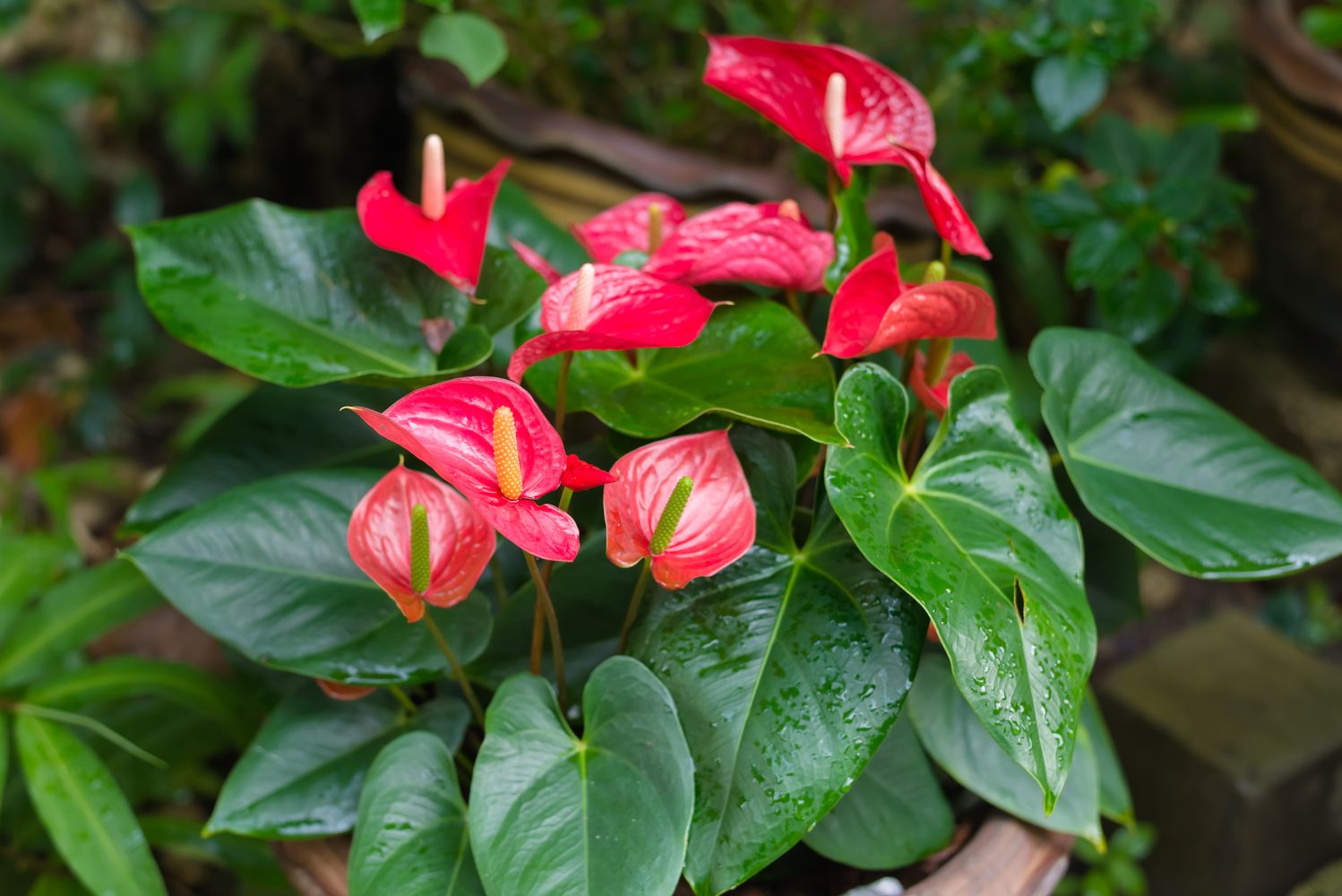Flamingo Flower Plant: A Gorgeous Addition to Your Home
Flamingo Flower, also known as Anthurium, is a popular and stunning tropical plant that is loved for its vibrant and colorful blooms. This plant is native to the rainforests of Central and South America and belongs to the Araceae family. Anthurium is a popular choice for indoor plants due to its striking appearance and relatively easy care requirements.
The Anatomy of a Flamingo Flower Plant
The Flamingo Flower plant has glossy, dark green, heart-shaped leaves that provide a beautiful backdrop for its vibrant flowers. The flowers are the main attraction of this plant, coming in shades of red, pink, white, and even orange. The flowers of the Flamingo Flower plant are actually spathes, which are modified leaves that surround the spadix, a rod-like structure that holds the tiny flowers. These spathes can last for several weeks, making the Flamingo Flower a long-lasting and low-maintenance plant.
Caring for Your Flamingo Flower Plant
Flamingo Flower plants are relatively easy to care for, making them a great choice for both beginner and experienced plant enthusiasts. Here are some tips for keeping your Flamingo Flower plant healthy and thriving:
Light:
Flamingo Flower plants prefer bright, indirect light. They can tolerate some shade, but too much direct sunlight can scorch their leaves. Place your Flamingo Flower plant near a window that receives bright, filtered light, but avoid placing it in direct sunlight.
Water:

Water your Flamingo Flower plant when the top inch of soil feels dry to the touch. Be sure to allow any excess water to drain out of the pot to prevent root rot. Flamingo Flower plants prefer slightly moist soil, but they can tolerate brief periods of dryness.
Temperature and Humidity:
Flamingo Flower plants prefer warm temperatures between 65-80°F (18-27°C). They also prefer high humidity levels, so consider placing a humidifier near your plant or placing it on a tray filled with pebbles and water to increase humidity.
Fertilizer:
Feed your Flamingo Flower plant with a balanced liquid fertilizer every 4-6 weeks during the growing season (spring and summer). Avoid fertilizing your plant during the fall and winter when it is not actively growing.
Repotting:
Flamingo Flower plants prefer to be slightly root-bound, so you only need to repot them every 2-3 years or when they have outgrown their current container. When repotting, choose a pot that is slightly larger than the current one and use a well-draining potting mix.
Propagation of Flamingo Flower Plants
Flamingo Flower plants can be easily propagated through division or by taking stem cuttings. To propagate your Flamingo Flower plant through division, gently separate the plant into smaller sections, making sure each section has roots attached. To propagate through stem cuttings, simply cut a 4-6 inch section of stem with at least one node and place it in a moist potting mix.
Common Pests and Diseases
Flamingo Flower plants are relatively pest and disease-resistant, but they can still be susceptible to common houseplant pests such as aphids, mealybugs, spider mites, and scale. To prevent pests, regularly inspect your plant for any signs of infestation and treat them with insecticidal soap or neem oil. Flamingo Flower plants can also be prone to root rot if overwatered, so be sure to allow the soil to dry out slightly between waterings.
In Conclusion
Flamingo Flower plants are a stunning and low-maintenance addition to any home. With their vibrant flowers and glossy leaves, they can brighten up any room and add a touch of tropical beauty. By following the care tips outlined in this article, you can keep your Flamingo Flower plant healthy and thriving for years to come.